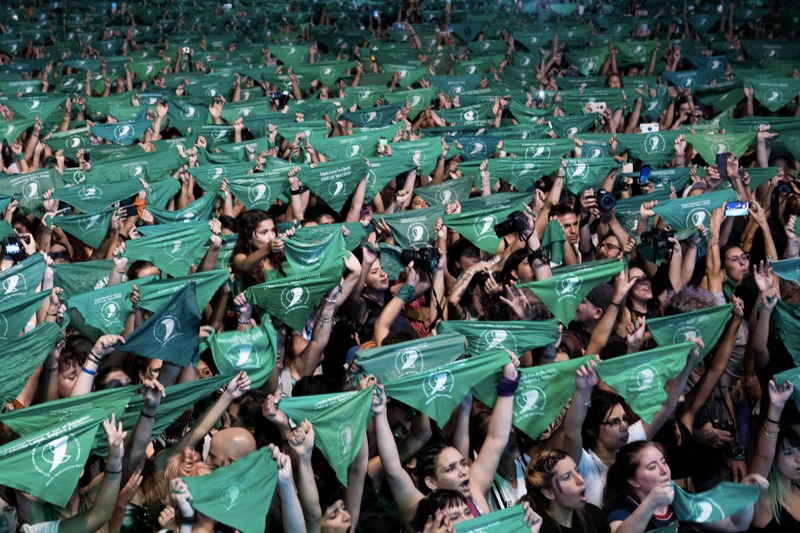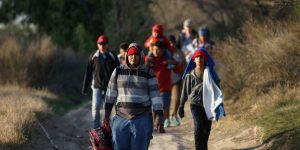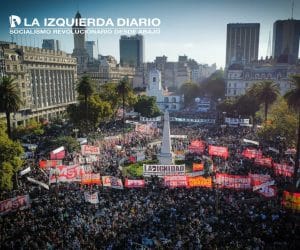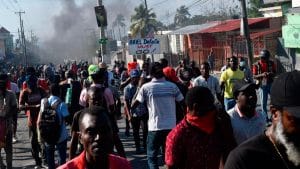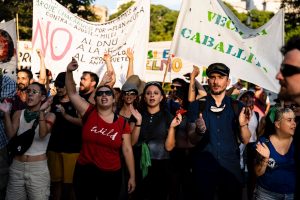On May 14, following revelations that the Supreme Court is poised to overturn Roe v. Wade, marches and rallies were held across the United States in support of abortion. Many at these mobilizations wore green — especially green bandanas — in solidarity with the international movement for reproductive rights.
The green bandana — specifically, the pañuelo, or handkerchief — became a symbol of Argentina’s movement for the right to legal, safe, and free abortion, known as the “Green Wave.” In February 2018, thousands of young women responded to a call for an action at the Argentinian Congress by the National Campaign for the Right to Legal, Safe and Free Abortion, the umbrella organization that many years ago coordinated the introduction of bills to legalize abortion. The mobilization became the first pañuelazo, a mass event featuring the green bandanas. No one expected it, but within a few minutes, the organization sold out the few bandanas it had brought.
Since that moment, and since abortion became enshrined in Law 27.610, green has been the color of the movement for legal abortion. One thing that was distinctive about the Argentinean movement was how this law was won. After decades of struggle, the right was won through a massive movement that made the street its battlefield, bringing the discussion to every dinner table, the workplace, the school, the university and, finally, to Congress.
Even amid the pandemic, when the law was passed, the movement in the street was present. It was a victory for all — high school students, university students, working women, poor women — because we fought not only to decriminalize abortion but also to guarantee it as a right in the public healthcare system, free and safe.
The Story Began Long Before
The National Campaign for the Right to Legal, Safe and Free Abortion presented its draft bill eight times before it was approved in 2020, including in 2018, when it was defeated in the Senate.
Before 2018, in the fabric stores of Buenos Aires, the green color located between 347 C and 3415 C on the Pantone scale was called “Benetton green.” Today it is unofficially known as “legal abortion green.” Green flooded everything: clothes, backpacks, accessories, makeup.
Bananas, or handkerchiefs, have long been a symbol in Argentina. The white handkerchief (originally a cloth diaper, used in our country at that time) is the symbol of the Mothers and Grandmothers of Plaza de Mayo, those who defied the military dictatorship and denounced the disappearance of their children and grandchildren.
The choice of green was quite pragmatic. It was at the National Women’s Meeting in Rosario in 2003, an event that takes place every year in Argentina, that the demand for the right to legal, safe, and free abortion made the front page of national newspapers. One of the members of the campaign said the movement wanted to distribute many bandanas but could not get enough the fabric in purple, the universal color of feminism, but they did get green.
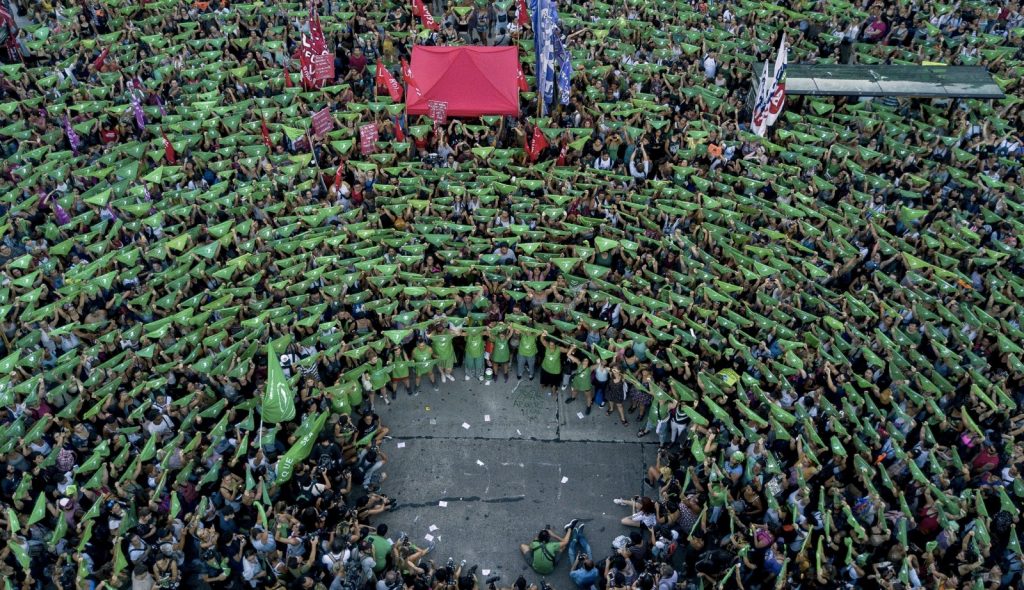
And since the color had no strong political connotation in Argentina and is not affiliated with any political party, it allowed anyone to wear it and say, “I support the right to abortion.” A new meaning was thus built: green is the color of legal abortion. According to official numbers, the National Campaign distributed about 8,000 bandanas each year after it began. In 2018, this number exceeded 200,000. The bandanas could be acquired at any demonstration, on almost any corner in city centers, and at many kiosks.
Green for Export
Even when the Green Wave was defeated in a Senate vote in 2018, the green bandana began to spread across the continent and beyond. First, people donned bandanas in solidarity every time Argentina mobilized for the votes and asked for support for the struggle. Actions at consulates multiplied, and pañuelazos were held in squares all over the world where people painted their faces green and wore improvised bandanas.
The strength of the Argentinean movement then inspired protests, assemblies, and mobilizations in Mexico, Chile, and Costa Rica, among other countries. Argentinian people had won the right to decide about their own bodies and established that this right is for everyone who can get pregnant — not just for those who can afford it. This right can be won in other countries, as has been shown by the decriminalization of abortion in Colombia and Mexico (with some differences in each country).
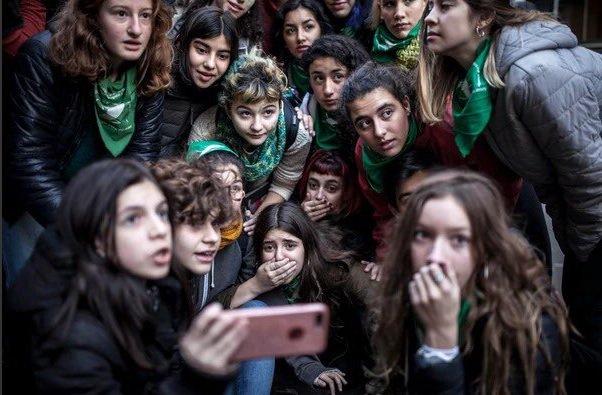
Today, the green bandanas have reached the United States. The threat to overturn Roe v. Wade was a stark warning for all those who fight oppression. The green bandanas are back where they are strongest: on the streets, bridges, and squares; on the wrists of those who marched across the country against reactionary attacks; on the banners of groups of friends, university peers, and work colleagues; and in the columns of workers who organize unions.
As in Argentina, the the right to legal, safe, and free abortion can only be won in the streets. As the Argentinean suffragette Julieta Lanteri said in 1922, “Bonfires of female emancipation are burning, overcoming rancid prejudices and ceasing to beg for their rights. These are not begged for, they are conquered.” This is still true a century later.


